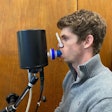
A multidimensional diagnostic approach incorporating chest computed tomographic (CT) imaging abnormalities and respiratory symptoms into the COPD diagnostic schema could improve identification in individuals with poor respiratory outcomes. That’s according to a study, “A Multidimensional Diagnostic Approach for Chronic Obstructive Pulmonary Disease,” published in JAMA.
Researchers looked at 9,416 participants in the multicenter cohort study using data from the Genetic Epidemiology of COPD (COPDGene) and the Canadian Cohort Obstructive Lung Disease (CanCOLD).
They found those newly diagnosed with COPD who used the new schema had higher mortality, more frequent exacerbations and faster decline of forced expiratory volume compared to those who were classified as not having COPD based on the new system.
Essentially, the researchers said the new schema — which includes chest imaging, respiratory symptoms and spirometry — identified more individuals at risk for poor respiratory outcomes than other diagnostic methods.
In addition, the authors noted the new schema found some individuals who have airflow obstruction without respiratory symptoms or evidence of structural lung disease were no longer classified as having COPD.
The research team added that future studies should evaluate whether some of the imaging criteria could be substituted with “other, more easily available mortalities, such as chest radiography, which may detect severe emphysema.”






















